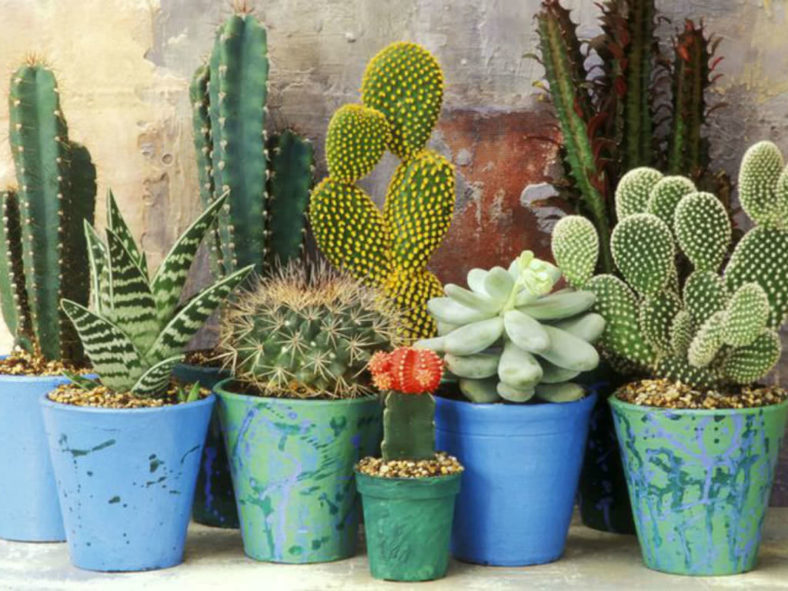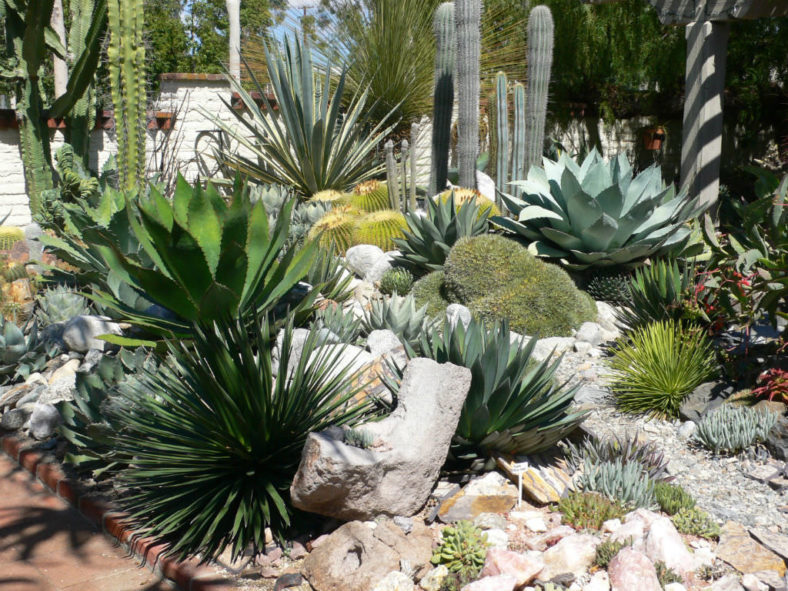Through millions of years of evolution, cacti and succulents have developed unique water storage methods and self-protection, enabling them to survive in some of the earth's most desolate growing areas.
Cacti and succulents are the perfect choices for indoor plants. Typical hot, dry indoor conditions often harm leafy foliage plants but provide the ideal climate for many succulent plants. Besides, these plants are very tolerant of neglect, requiring little watering or other care throughout the greater part of the year. The results are often large, colorful flowers, a bonus whenever they appear.
Outdoors, cacti and succulents are a great addition to the landscape or on a patio during the summer. Although most cacti and succulents cannot protect themselves from frost, a few will survive even the coldest winter climates.
No matter what you desire in plants, cacti and succulents have the diversity and adaptability to suit almost any lifestyle. A small investment will reward you with enjoyment for many years to come.

A succulent is generally considered any plant with the natural ability to store water in its body or roots. There are over 1,800 species of cacti. Hundreds of these species are available commercially. All cacti are native to the Western Hemisphere, and although many bear spines, this characteristic alone does not make them cacti. Instead, a cactus is distinguished by areoles, small nubbin-like structures that occur over the plant's body. The spines, roots, and flowers always grow from these areoles, whereas spines on succulents other than cacti grow directly out of the plant's body. Their unique adaptation enables succulent plants to store water quickly and in great volume.
Remember: Even though they are tough, adaptable plants, cacti and succulents do not "thrive on neglect." Instead, they "exist" with neglect but "thrive" on tender loving care. Due to their low humidity requirements, many cacti do better in the dry air of homes with central heat than most other houseplants. They also do very well outside during the summer in areas of the country with low humidity and warm night temperatures.
Light
Indoors, give them as much bright light as possible on your sunniest window. If kept in the dark or a shady location, they will stretch and get weak and skinny, trying to get to more light. They can burn outdoors if given too much direct hot sun all day, so try to provide an area with filtered sun or where they receive a few hours of direct sun and bright light the rest of the day.
Watering
Most cacti have small root systems and are susceptible to damage from too much moisture. Allow plants to dry thoroughly between waterings. A good rule of thumb for watering is to skip one week for every 1 inch (2.5 cm) of pot size. For example, a 2-inch (5 cm) pot should be watered once every two weeks, a 3-inch (7.5 cm) pot should be watered once every three weeks, etc.
Another thing to remember is when you water, water well! Ensure the water is running through the soil and flushing out the bottom of the pot. A well-watered pot will feel much heavier than one that has not been thoroughly saturated, and the plant should never be left sitting in standing water for any length of time. If you have watered the pot well, you will know when to water again by sticking your finger about an inch (2.5 cm) into the soil. If it is damp, it is fine. If it is dry, then it is time to water again — and water well!
Temperature
Average household temperatures are great, but keep them away from freezing temperatures next to a window in the wintertime. They can handle 35°F to 40°F (2°C to 5°C) just fine and will be dormant (resting, not growing) at these temperatures. The same goes for outdoors; if it goes below 35°F (2°C), bring them inside the shelter. Freezing temperatures will turn most cacti and succulents into goo!

Soil
Plenty of garden centers sell commercially packaged cactus and succulent mixes. However, if you need to make your own, here is a good all-purpose mix: for every part of good potting soil or humus, add two parts of perlite or pumice and one part of washed builder's sand.
Fertilizer
Cacti and succulents are not heavy feeders but benefit from light feeding during their growing period, usually the warmer months. Any all-purpose balanced liquid fertilizer is fine, something like a 20-20-20. Mix it to half or a quarter of the recommended strength on the label and give it once a month. It is always better not to fertilize than to overdo it when in doubt.
Little to no feeding during the dormant months is necessary, usually during winter.
Transplanting
Your plant will be perfectly happy in the original pot for at least a year and not need to be moved. However, if it has been a year and it is getting too big for the pot, or you want to put it in a special or favorite pot, here is what to do. First, be sure to choose a pot that is only a size larger than the original.
If your plants are in a 2.5-inch (6 cm) pot, the next best size would be a 3-inch (8 cm) diameter pot. Make sure the pots have drain holes.
Gently tap the plant out of its pot and carefully loosen some of the soil around the outside of the root ball. Put some soil mix in the new pot and set the root ball atop it. Fill around it with fresh soil, lightly firming it in, and ensure the plant is sitting at the same soil level it was initially.
Do not water for a few days; this allows any broken roots to heal. Then, water and let it drain thoroughly.
Propagation
The main ways in which cacti and succulents are propagated are by cuttings, seeds, and offsets. Observe how it grows to select the appropriate way to propagate your plant. Most barrel types are grown from seed or offsets. Columnar or pad types are grown mainly from cuttings. Certain forms are grafted to one another in order to grow.
Most seeds germinate quickly, and many commercial varieties are self-fertile. Offsets (pups) can be stripped from the mother plants and replanted immediately. Cuttings should be left to dry out of direct sunlight for up to 2 weeks. This drying period allows the cut area to "heal."
Source: toptropicals.com
Links
- Succupedia: Browse succulents by Scientific Name, Common Name, Genus, Family, USDA Hardiness Zone, Origin, or cacti by Genus